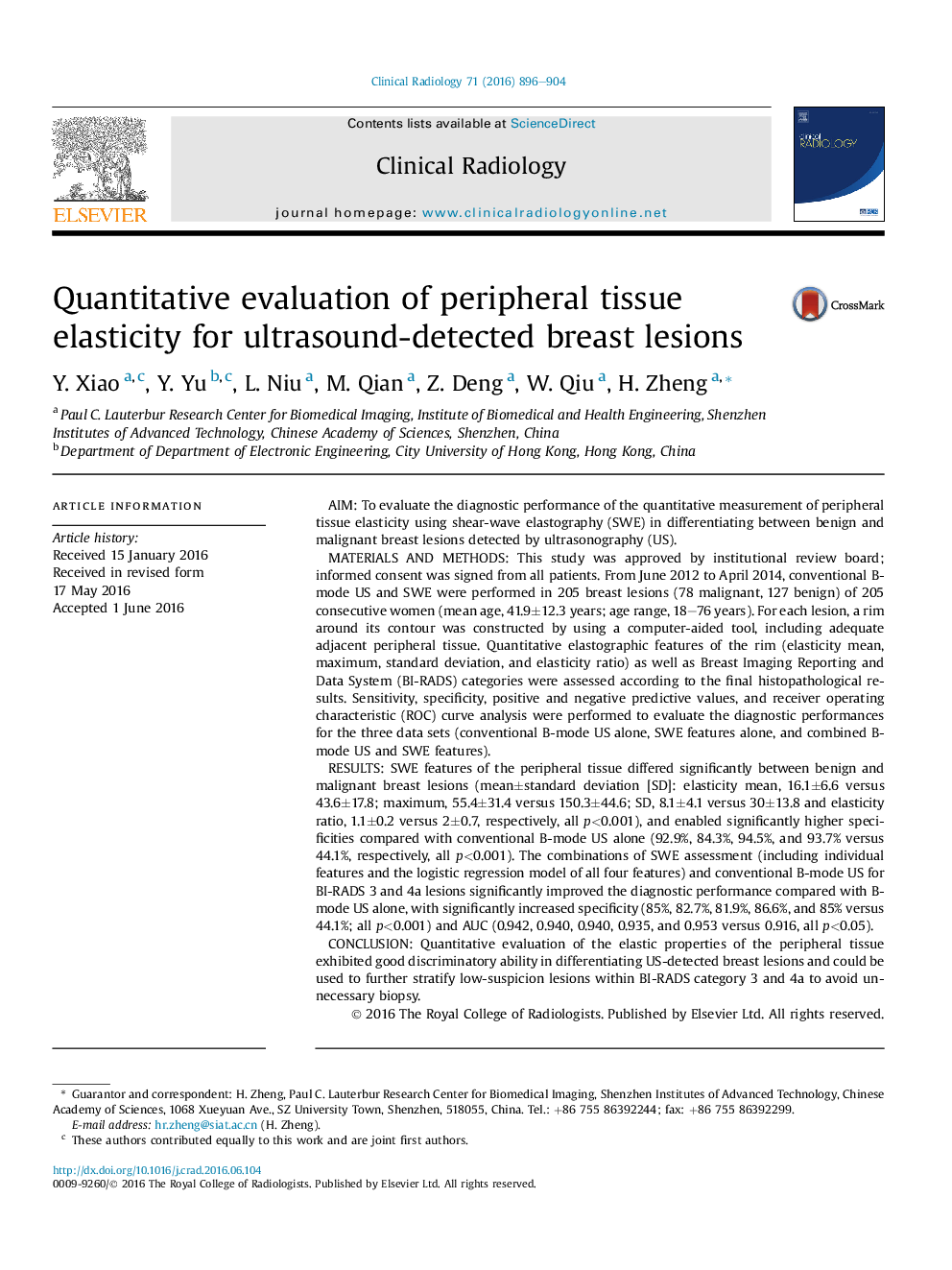| Article ID | Journal | Published Year | Pages | File Type |
|---|---|---|---|---|
| 3981139 | Clinical Radiology | 2016 | 9 Pages |
•Malignancy-associated increased stiffness was presented in the peripheral tissue of a lesion.•Peripheral elasticity could further stratify low suspicious lesions with B-mode US.•The best-performing parameter was elasticity lesion-to-fatty ratio of peripheral tissue.•Computer-aided tool with shear wave elastography provided further elasticity information for breast characterization.
AimTo evaluate the diagnostic performance of the quantitative measurement of peripheral tissue elasticity using shear-wave elastography (SWE) in differentiating between benign and malignant breast lesions detected by ultrasonography (US).Materials and methodsThis study was approved by institutional review board; informed consent was signed from all patients. From June 2012 to April 2014, conventional B-mode US and SWE were performed in 205 breast lesions (78 malignant, 127 benign) of 205 consecutive women (mean age, 41.9±12.3 years; age range, 18–76 years). For each lesion, a rim around its contour was constructed by using a computer-aided tool, including adequate adjacent peripheral tissue. Quantitative elastographic features of the rim (elasticity mean, maximum, standard deviation, and elasticity ratio) as well as Breast Imaging Reporting and Data System (BI-RADS) categories were assessed according to the final histopathological results. Sensitivity, specificity, positive and negative predictive values, and receiver operating characteristic (ROC) curve analysis were performed to evaluate the diagnostic performances for the three data sets (conventional B-mode US alone, SWE features alone, and combined B-mode US and SWE features).ResultsSWE features of the peripheral tissue differed significantly between benign and malignant breast lesions (mean±standard deviation [SD]: elasticity mean, 16.1±6.6 versus 43.6±17.8; maximum, 55.4±31.4 versus 150.3±44.6; SD, 8.1±4.1 versus 30±13.8 and elasticity ratio, 1.1±0.2 versus 2±0.7, respectively, all p<0.001), and enabled significantly higher specificities compared with conventional B-mode US alone (92.9%, 84.3%, 94.5%, and 93.7% versus 44.1%, respectively, all p<0.001). The combinations of SWE assessment (including individual features and the logistic regression model of all four features) and conventional B-mode US for BI-RADS 3 and 4a lesions significantly improved the diagnostic performance compared with B-mode US alone, with significantly increased specificity (85%, 82.7%, 81.9%, 86.6%, and 85% versus 44.1%; all p<0.001) and AUC (0.942, 0.940, 0.940, 0.935, and 0.953 versus 0.916, all p<0.05).ConclusionQuantitative evaluation of the elastic properties of the peripheral tissue exhibited good discriminatory ability in differentiating US-detected breast lesions and could be used to further stratify low-suspicion lesions within BI-RADS category 3 and 4a to avoid unnecessary biopsy.
